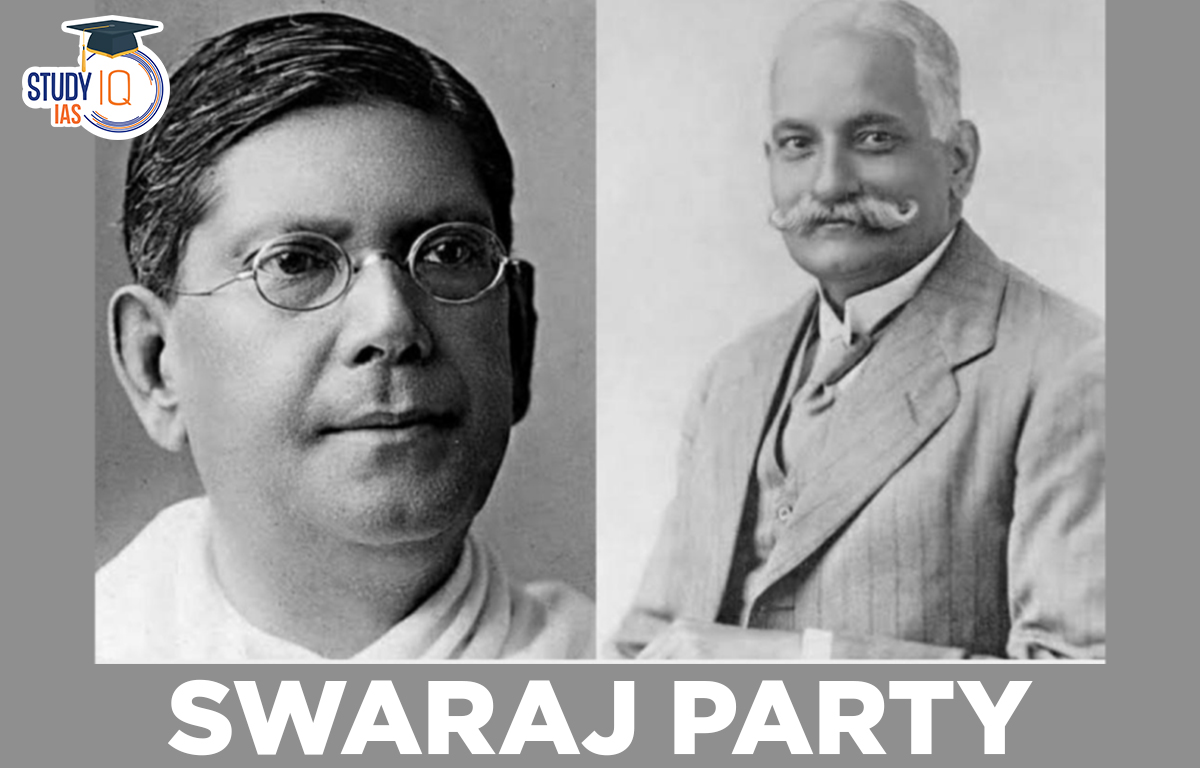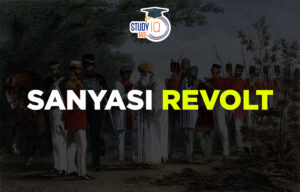Table of Contents
Swaraj Party
C R Das and Motilal Nehru founded the Swaraj Party, also known as the Congress-Khilafat Swarajya Party, on January 1st, 1923. The government of India act of 1919, the 1923 elections, and a number of other key events preceded the creation of the Swaraj Party. Reading up on this party’s founding is recommended for the IAS Exam as it is a significant episode in contemporary Indian history.
Swaraj Party History
Mahatma Gandhi abandoned the Non-Cooperation Movement in 1922 following the Chauri Chaura Incident. There were numerous arguments among Congress Party leaders in response to this. Some wanted the boycott of the legislature to continue, while others wanted it to stop so they could run in the elections. The prior group of leaders, which included Rajendra Prasad, Sardar Vallabhai Patel, C. Rajagopalachari, etc., was referred to as no-changers.
The others were referred to as the pro-changers because they wished to join the legislative council and obstruct the British government from within. These individuals included C R Das, Motilal Nehru, Srinivasa Iyengar, and others. C R Das, who presided over the Congress’s Gaya session in 1922, proposed a resolution to enter the parliament, but it was rejected. Das and other leaders founded the Swaraj Party after leaving the Congress.
Motilal Nehru served as the secretary, and C R Das served as the president. The Swaraj Party was led by prominent figures including N C Kelkar, Huseyn Shaheed Suhrawardy, and Subhas Chandra Bose.
Swaraj Party Formation
Pioneers of the Congress Party responded to the cessation of non-cooperation movement in 1922 with an astounding amount of logical contradictions. Some wanted the boycott of the legislature to continue, while others wanted it to stop so they could run in the elections. The former group was known as “no-changers,” whilst the latter group was known as “pro-changers.”
C R Das, who presided over the Congress’s Gaya session in 1922, proposed a resolution to enter the parliament, but it was rejected. With the help of other politicians, Das founded the Congress-Khilafat Swarajaya Party, of which Nehru was one of the secretaries and served as president.
Swaraj Party Objective
The goal of the Swaraj Party is to free India from British rule and establish Swarajya (self-government). The goal was to join the council and help it succeed in order to accept the “Non-Cooperation movement’s” policy.
The intention was to passionately oppose the government’s policy and hinder its work in order to make it difficult for the government to carry out its duties and push it to alter its policies. The goal was to obstruct and hinder British rule in its tracks.
The goal was to cancel the government budget by joining the council and introducing new policies and lawmakers to strengthen the nation. Another goal was to introduce legislation into the council that would enable the country to have more power and limit the influence of the bureaucracy. Stepping down from positions when appropriate and encouraging productive work outside of the council.
Swaraj Party Work
The Swarajists’ programmes could not be distinct from the Congress’s programmes because they are an inherent component of it. Under the auspices of Congress, the Swaraj Party said that it would implement a non-violent non-cooperation movement with the aim of destroying the 1919 constitution. The following programme was adopted, the party declared.
The Montford Reforms were undone by the Swaraj Party. The Swara Party put an end to the diarchy in Bengal. Vithalbhai Patel was elected as the head of the central legislature thanks to the party’s efforts. The Swaraj Party repeatedly staged walkouts from the legislature, harming the reputation of the British administration.
In order to achieve Swaraj, several British items were boycotted as a political tool. To promote cooperation in the areas of trade and goodwill among Asian nations, the Federation of Asian Countries was established. Publicity committees were established to promote national activity outside of India in order to win the support and cooperation of other nations in the fight for Swaraj.
Swaraj Party Decline
The enthusiasm of 1924 started to wane, and between 1925 and 1927, the Swarajists became demoralized and eventually fell out of favor. The Swarajists failed to carry out their strategy of “constant, continuous uniform obstruction” inside the legislatures. The loss of C R Das in 1925 left the party in even worse shape.
New political horizons were opened in the nation with the announcement of the Simon Commission in the latter months of 1927 and Lord Birkenhead’s exhortation to Indians to draught a constitution that will be embraced by all segments of society.
The Calcutta Congress of 1928 decided to declare complete independence as its eventual goal in the event that the British Government did not approve the Nehru Report by December 31, 1929. The Council Entry program thus took a back seat in the new political climate and became irrelevant.
1. Rising Communal Politics
The ongoing conflict between Hindus and Muslims, as well as the existence of reactionary forces from both populations within the party that purported to be secular, truly made things tough. Hindus believed that the Congress posed a threat to their interests.
The Swarajist perspective was undercut by the Hindu Mahasabha’s activities. Former Muslim members of the Congress fought elections as Muslims, not as Swarajists, as a result of the Muslims’ significant separation from the Congress.
2. Lure of Office
Another factor that contributed to the Swarajists’ demise was the allure of office. They launched their careers by joining councils with the stated intention of mounting a fierce challenge to the bureaucracy. The attitude of opposition, though, quickly gave way to cooperation.
3. Internal Dispute
The Swaraj Party’s membership was split in two. Its legitimacy was being undermined by disagreements between the parties and mistrust. Some Swarajists announced their candidature as independents after being denied tickets. The Swarajists were divided among themselves. They were separated into responders and non-responders. M. M. Malaviya, Lala Lajpat Rai, and N. C. Kelkar were responsivists who wished to work with the government and hold office, while Motilal Nehru was a non-responsivist who left the legislature in 1926.
Swaraj Party UPSC
Even if the divisions among its members prevented Swaraj Dal from realising its goals, it still holds a significant position in the national movement. India is more than capable of achieving Swarajya, as evidenced by the leadership of the Vithalbhai Patel Central Assembly, Motilal Nehru’s party leadership, and Chittaranjan Das’s effective management of the Swaraj Party in the council. One crucial historical topic for UPSC/IAS preparation is this one.


 Maharashtra’s Mendrachi Vancharai Syst...
Maharashtra’s Mendrachi Vancharai Syst...
 Keeladi Excavation: Uncovering the Ancie...
Keeladi Excavation: Uncovering the Ancie...
 Sanyasi Revolt, Objectives, History, Rea...
Sanyasi Revolt, Objectives, History, Rea...





















